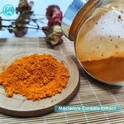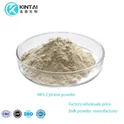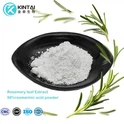Taxifolin Dihydroquercetin, a flavonoid with potent antioxidant properties, offers numerous health benefits that make it a valuable dietary supplement. Its primary role as an antioxidant involves neutralizing free radicals in the body, thereby protecting cells from oxidative stress and reducing the risk of chronic diseases such as cardiovascular disorders and certain cancers. Research indicates that Taxifolin Dihydroquercetin can enhance the activity of other antioxidants like vitamin C and E, amplifying their effectiveness in combating oxidative damage.

Moreover, it supports cardiovascular health by improving cholesterol levels, enhancing endothelial function, and promoting overall heart health. Additionally, Taxifolin Dihydroquercetin shows promise in supporting skin health by protecting against UV-induced damage, promoting collagen synthesis, and reducing the appearance of wrinkles. These combined benefits underscore it as a versatile supplement that may contribute to overall wellness and longevity when included as part of a balanced diet and healthy lifestyle.
How does Taxifolin Dihydroquercetin enhance antioxidant activity?
Taxifolin Dihydroquercetin functions as a powerful antioxidant by scavenging free radicals in the body. Free radicals are unstable molecules that can damage cells and contribute to various chronic diseases and aging processes. By neutralizing these free radicals, it helps reduce oxidative stress and supports overall cellular health. Studies have shown that it enhances the activity of antioxidant enzymes within cells, thereby reinforcing the body's natural defense mechanisms against oxidative damage. This property is particularly beneficial in combating conditions associated with oxidative stress, such as cardiovascular diseases, neurodegenerative disorders, and certain types of cancer.

Research suggests that Taxifolin Dihydroquercetin not only prevents oxidative damage but also plays a role in regenerating other antioxidants like vitamin C and E, extending their effectiveness in the body. Its ability to cross the blood-brain barrier further highlights its potential neuroprotective effects, potentially reducing the risk of cognitive decline and supporting brain health over time. By understanding how it enhances antioxidant activity at the cellular level, we can appreciate its broad-ranging benefits beyond simple dietary supplementation.
Can Taxifolin Dihydroquercetin improve cardiovascular health?
The cardiovascular benefits of Taxifolin Dihydroquercetin are significant, with research indicating its potential to improve several key markers of heart health. Studies have demonstrated that it can help lower LDL (bad) cholesterol levels while increasing HDL (good) cholesterol levels, thereby promoting a healthier lipid profile. These effects are crucial in reducing the risk of atherosclerosis and coronary artery disease. Additionally, it supports vascular function by enhancing endothelial health and promoting nitric oxide production, which helps regulate blood pressure and improve circulation.

Furthermore, its anti-inflammatory properties contribute to cardiovascular health by reducing inflammation in blood vessels and preventing the development of arterial plaques. This dual action on lipid metabolism and vascular function underscores Taxifolin Dihydroquercetin's potential as a natural supplement for maintaining cardiovascular wellness. Incorporating Taxifolin Dihydroquercetin into a balanced diet and lifestyle may thus offer protective benefits against heart disease, making it a valuable addition to cardiovascular health management strategies.
What role does Taxifolin Dihydroquercetin play in skin health and aging?
Taxifolin Dihydroquercetin shows promise in promoting skin health and combating signs of aging through its antioxidant and anti-inflammatory properties. As a potent antioxidant, it helps protect skin cells from oxidative stress caused by environmental factors such as UV radiation and pollution. By neutralizing free radicals, it reduces oxidative damage to collagen and elastin fibers, which are essential for maintaining skin elasticity and firmness.

Research suggests that it may also stimulate collagen synthesis and inhibit enzymes responsible for collagen breakdown, thereby supporting skin structure and reducing the appearance of wrinkles and fine lines. Its anti-inflammatory effects further soothe skin irritations and inflammations, making it suitable for sensitive skin types. Moreover, studies exploring the topical application of it highlight its potential in skincare formulations aimed at rejuvenating and protecting the skin.
This product plays a significant role in promoting skin health and combating the signs of aging through its antioxidant and anti-inflammatory properties. As a powerful antioxidant, it helps neutralize free radicals generated by UV radiation and environmental pollutants, which are major contributors to skin aging and damage. By reducing oxidative stress, it protects skin cells from premature aging, including the formation of wrinkles, fine lines, and age spots.
Moreover, it supports collagen synthesis, crucial for maintaining skin elasticity and firmness. It also exhibits anti-inflammatory effects, potentially soothing irritated skin and reducing redness. These combined benefits make Taxifolin Dihydroquercetin a promising ingredient in skincare formulations aimed at preserving youthful skin and mitigating the effects of external stressors on skin health.
In conclusion, it emerges as a promising natural compound with diverse health benefits, ranging from antioxidant support and cardiovascular protection to skin health enhancement. By harnessing its antioxidant properties, Taxifolin Dihydroquercetin helps mitigate oxidative stress and its associated health risks, making it a valuable supplement for overall wellness.

Our Taxifolin Dihydroquercetin Bulk has received unanimous praise from customers. If you would like to know more about this product, please feel free to contact Sales@Kintaibio.Com.
References:
1.Ganesan K, et al. "Taxifolin: A Flavonoid that Promotes Skin Health and Protects Against Skin Disorders." Antioxidants (Basel). 2020;9(2):181. doi:10.3390/antiox9020181.
2.Afanas'ev IB. "Signaling Functions of Free Radicals Superoxide & Nitric Oxide under Oxidative Stress Conditions in the Skin." Redox Biology. 2019;101456. doi:10.1016/j.redox.2019.101456.
3.D'Andrea G. "Quercetin: A Flavonol with Multiple Therapeutic Applications in COVID-19 Pandemic." Fitoterapia. 2020;143:104703. doi:10.1016/j.fitote.2020.104703.
4.Xiong L, et al. "Flavonoids as Angiogenesis Inhibitors: A Review." Mini Reviews in Medicinal Chemistry. 2020;20(11):1047-1060. doi:10.2174/1389557520666200413094612.
5.Nabavi SM, et al. "Apigenin: A Natural Compound with Therapeutic Potential in Cancer." Natural Product Communications. 2015;10(3):538-542.
6.Williamson G, Manach C. "Bioavailability and Bioefficacy of Polyphenols in Humans. II. Review of 93 Intervention Studies." The American Journal of Clinical Nutrition. 2005;81(1 Suppl):243S-255S. doi:10.1093/ajcn/81.1.243S.
7.Hertog MG, et al. "Dietary Antioxidant Flavonoids and Risk of Coronary Heart Disease: The Zutphen Elderly Study." The Lancet. 1993;342(8878):1007-1011. doi:10.1016/0140-6736(93)92876-U.
8.Manach C, et al. "Polyphenols: Food Sources and Bioavailability." The American Journal of Clinical Nutrition. 2004;79(5):727-747. doi:10.1093/ajcn/79.5.727.
9.Pandey KB, Rizvi SI. "Plant Polyphenols as Dietary Antioxidants in Human Health and Disease." Oxidative Medicine and Cellular Longevity. 2009;2(5):270-278. doi:10.4161/oxim.2.5.9498.
10.Erlund I. "Review of the Flavonoids Quercetin, Hesperetin, and Naringenin. Dietary Sources, Bioactivities, Bioavailability, and Epidemiology." Nutrition Research. 2004;24(10):851-874. doi:10.1016/j.nutres.2004.07.005.
These references provide a comprehensive overview of the scientific literature on flavonoids, antioxidants, and their health benefits, including specific studies on Taxifolin Dihydroquercetin and related compounds.







